the Bungamati action plan
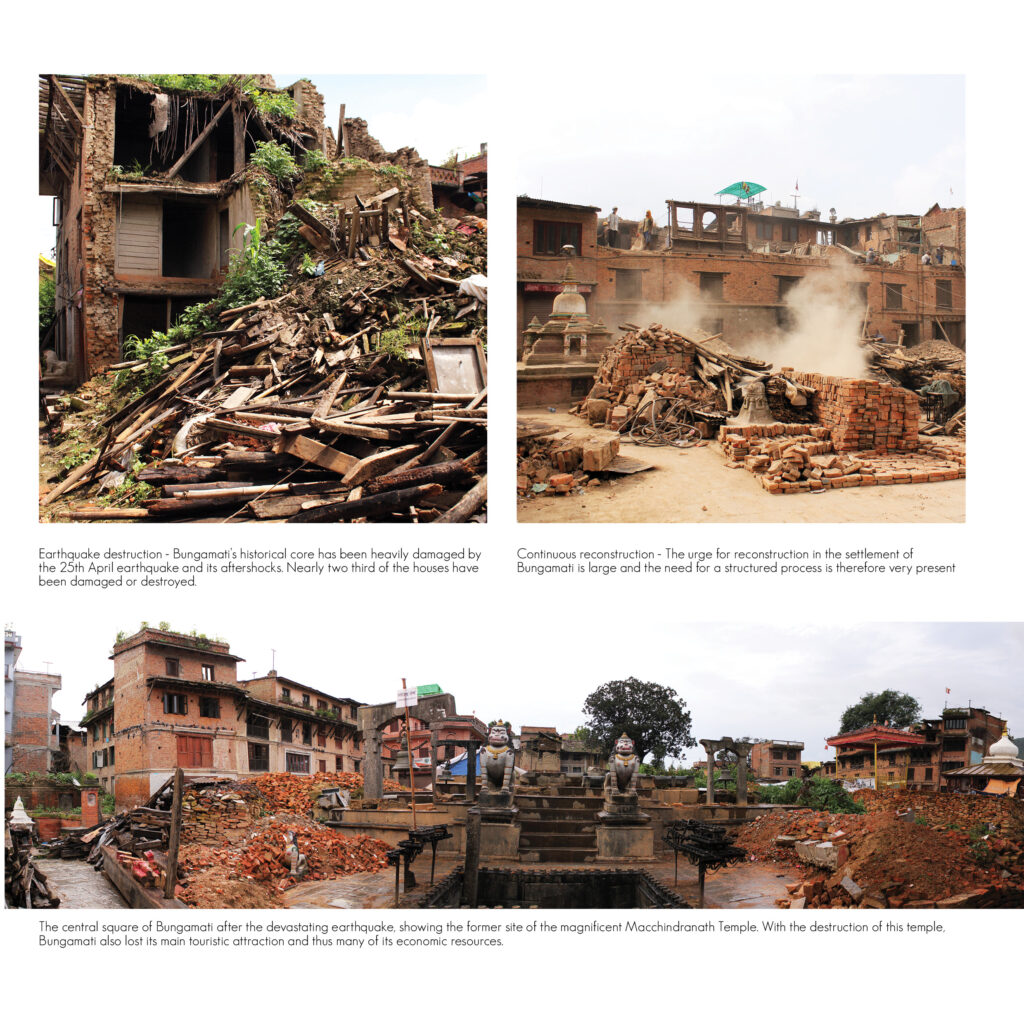
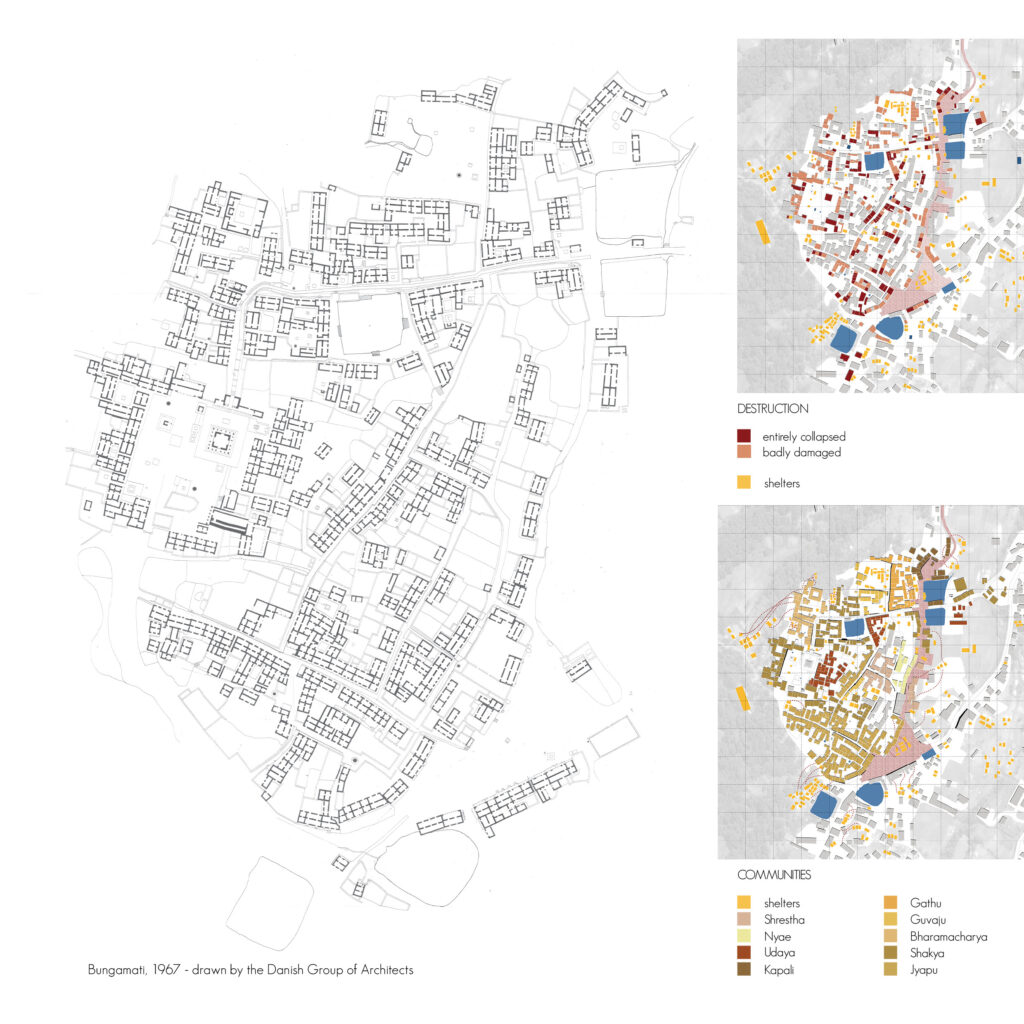
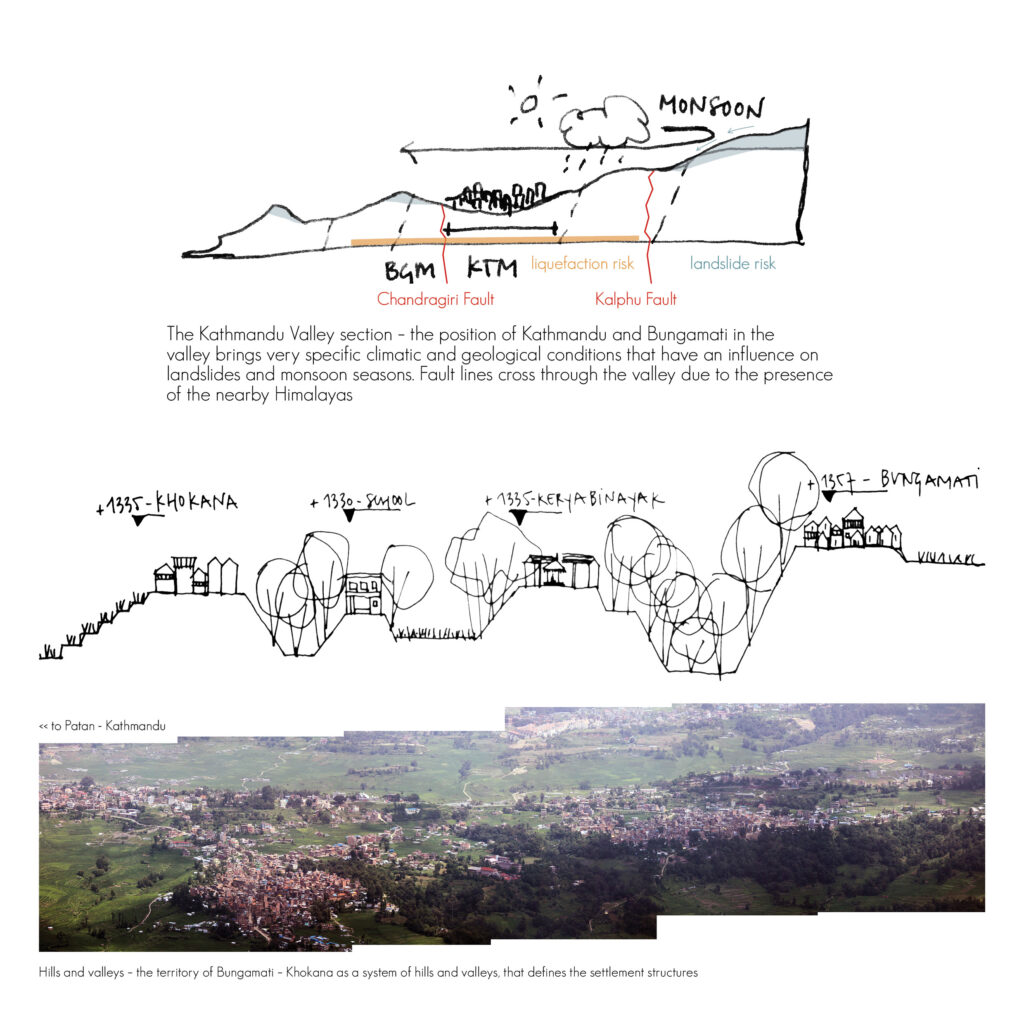
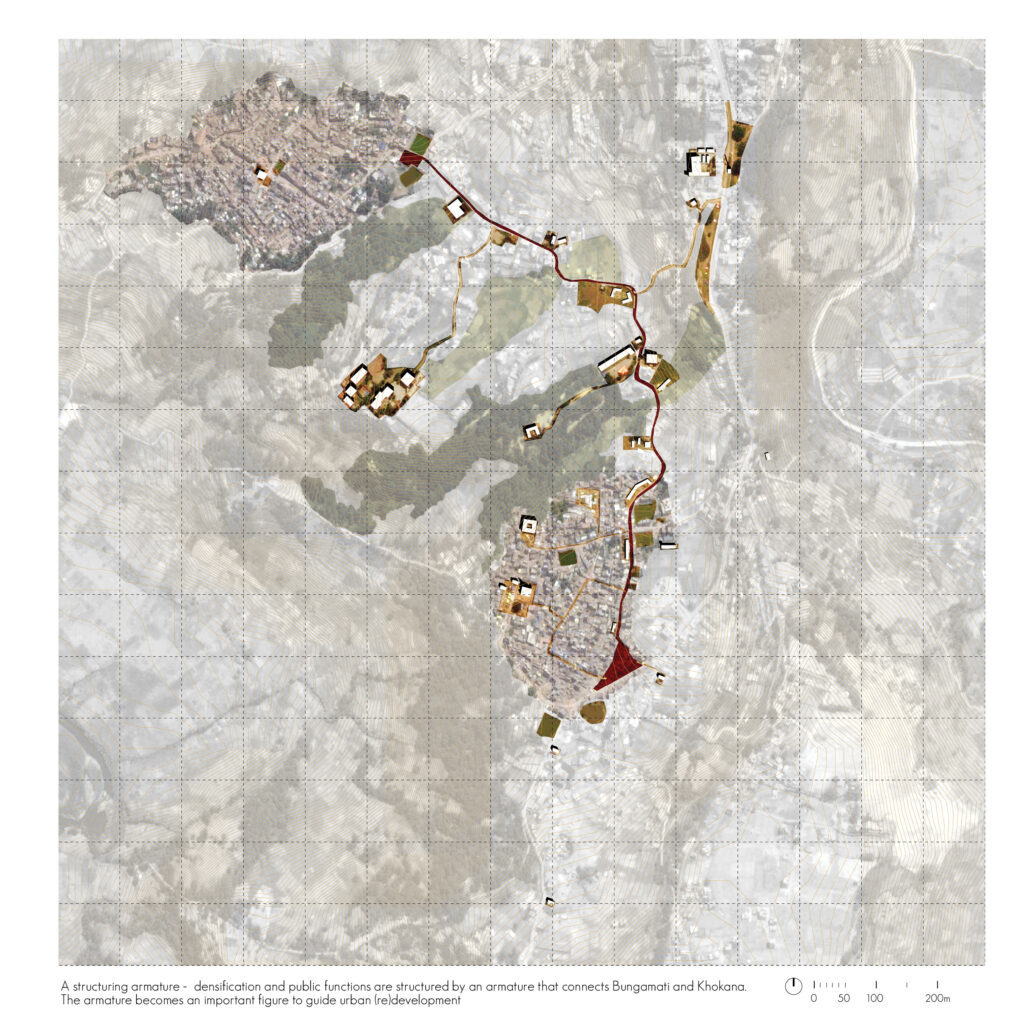
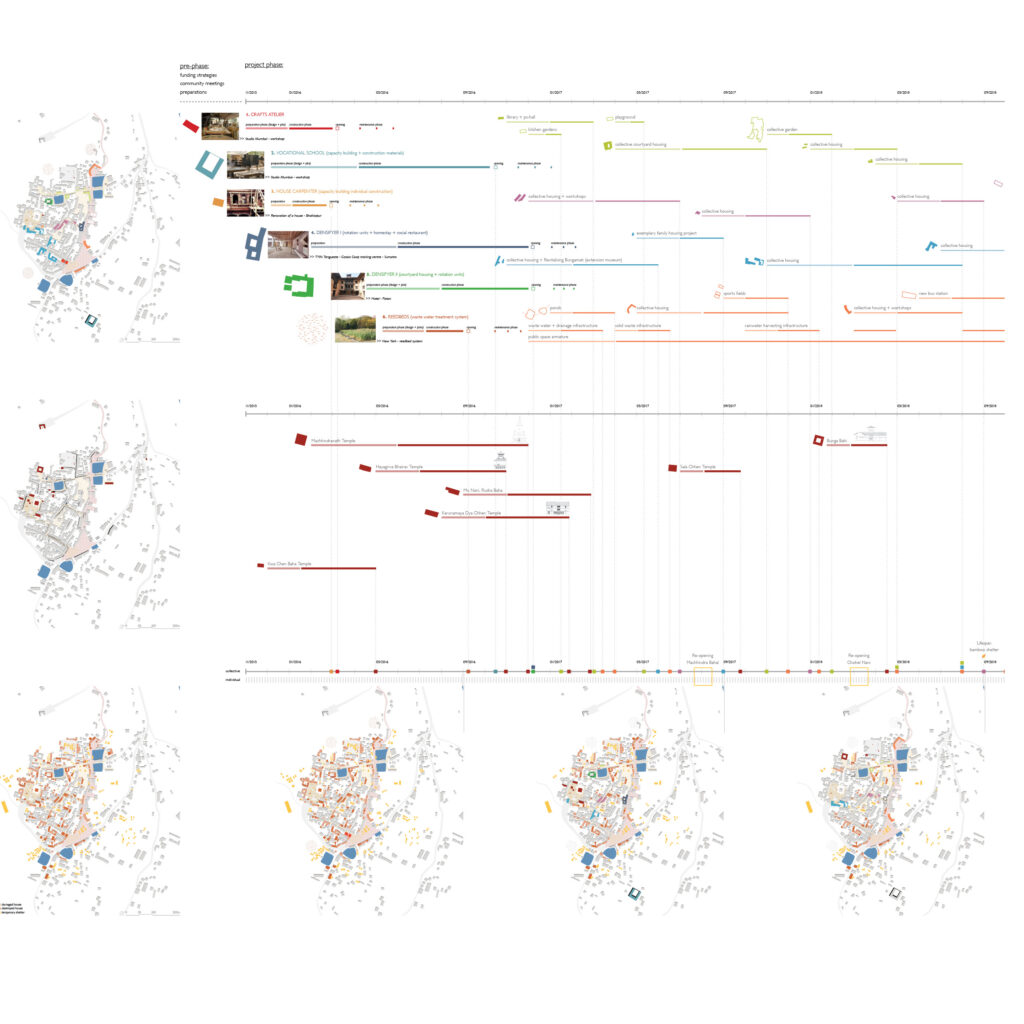
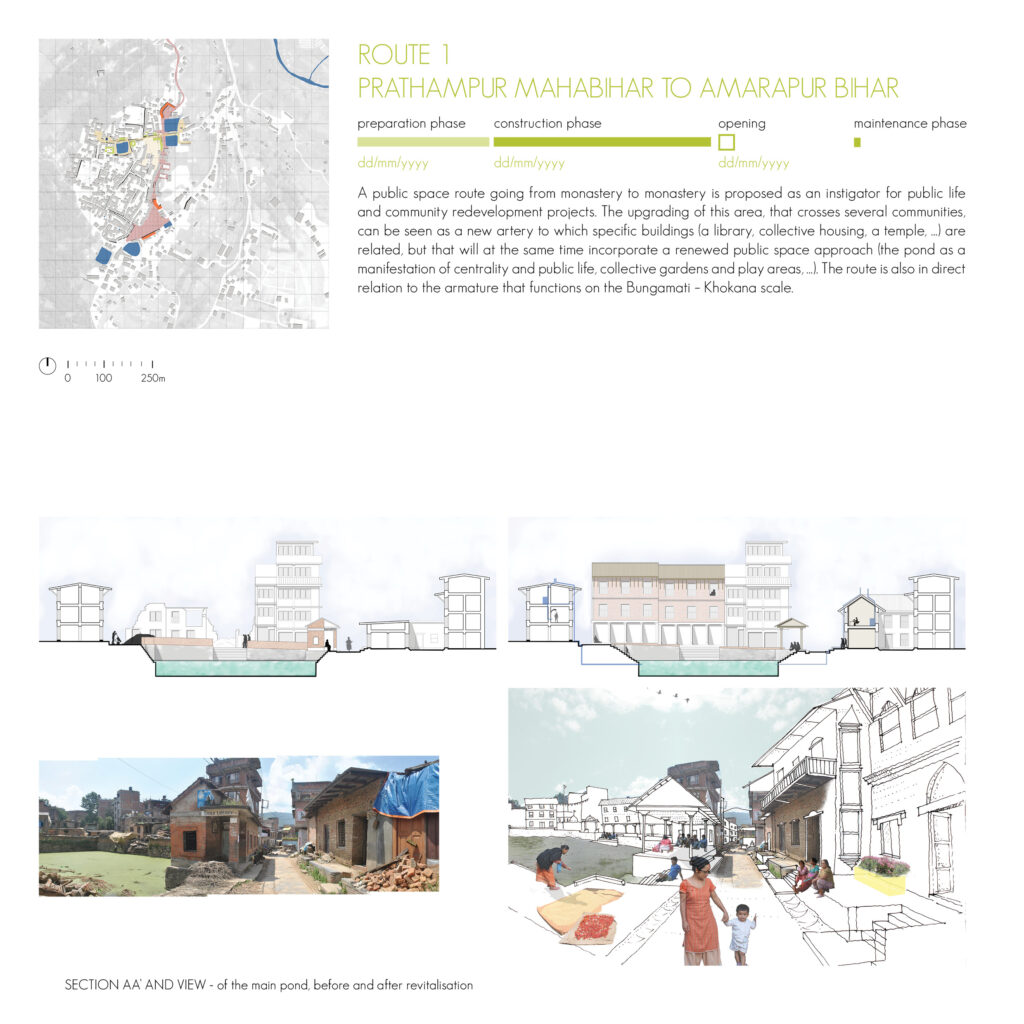

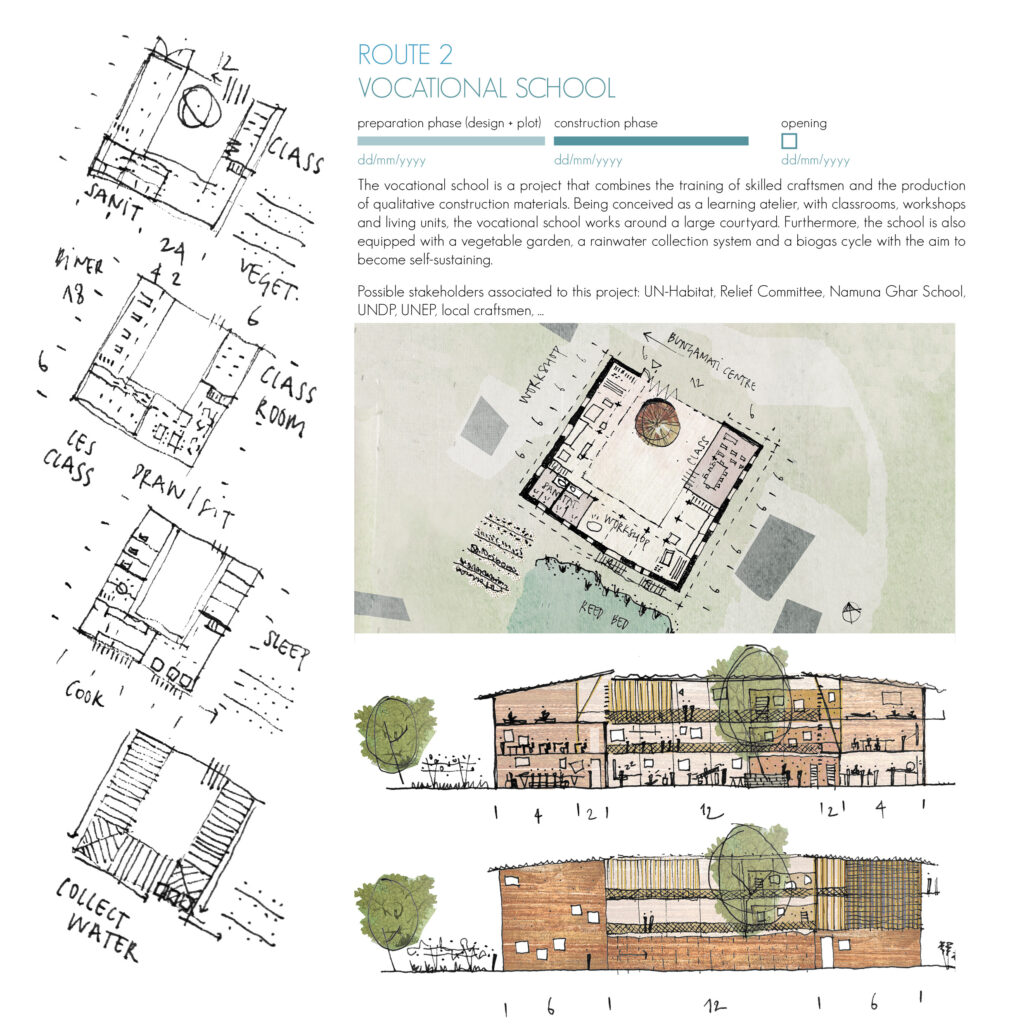
short note
2015, Kathmandu, Nepal
On 25 April 2015 11:56 local time, a 7,8 magnitude earthquake destroyed most of the vernacular settlements and monuments in Kathmandu Valley (Nepal) and triggered major displacement flows. Reconstructing these settlements while retaining their economic, socio-cultural and architectural identity remains a tremendous task to date. Adapting them to a sustainable future while making them earthquake responsive is yet a further challenge.
Local knowledge (UN-Habitat Nepal, Tribhuvan University and the village Relief Committee) and international expertise (University of Leuven) joined forces in the months following the earthquake to co-create together with local communities an action plan for Bungamati (a historic settlement in the South of the Kathmandu Valley). Not less than 900 of the 1200 houses were destroyed and its urban life, economic and touristic resources as well as its cultural heritage was swept away.
The post-disaster effort attempted very soon to link urgency measures to durable reconstruction that contributes to an improved rural/urban tissue, strengthens identity and empowers local communities. The action plan for Bungamati is a crucial instrument to tune emergency and durable and resilient interventions. Rather than a fixed master plan it proposes an engaging redevelopment approach that combines the immediate with long-term aspirations, local knowledge and capacities with international standards and cooperations. A spatial development frame, a tentative reconstruction timeline and a strategic set of tailor-made priority projects are expected to steer the long-term reconstruction process while simultaneously addressing acute needs. Priority projects, while stimulating international cooperation at the same time activate local agency and deeply rooted savoir-faires (such as construction methods)
The multi-scalar strategies are developed for housing as well as for the public realm. They also take into account water management and sanitation. Bungamati’s reconstruction is about revitalizing urban space and related livelihoods, rethinking the public realm while strategically incorporating technological innovation. Public space is the major catalyst of the plan and it becomes the armature along which a poignant intensification of residential activities and public functions and amenities can be gathered that support and improve local economies.
details
2015, Bungamati, Kathmandu, Nepal
for KULeuven, in collaboration with Annelies De Nijs
Client: UN Habitat Regional Office for Asia and the Pacific
In collaboration with: Shelter Program, Tribhuvan University, Anil Tuladhar, Kushma Thapa, Anatta Shrethacharya, Angela Tamrakar